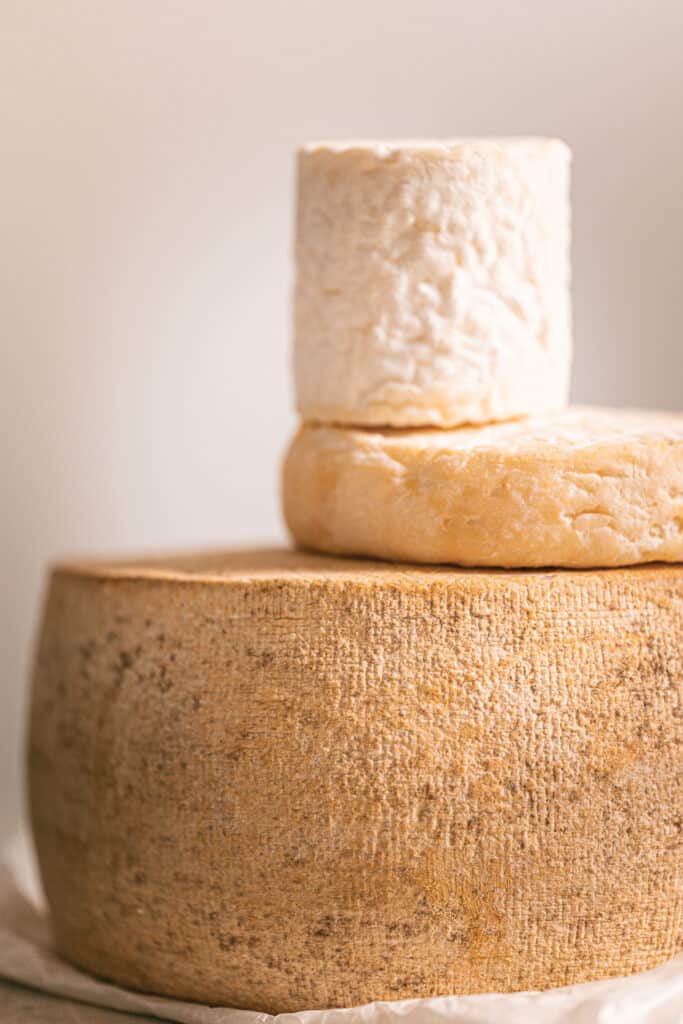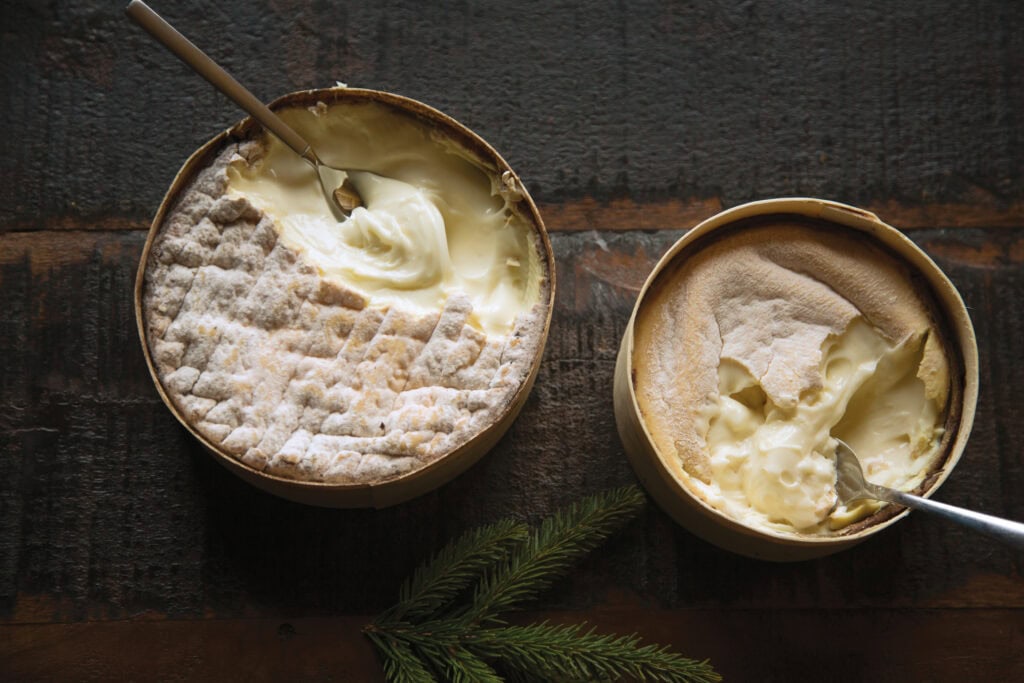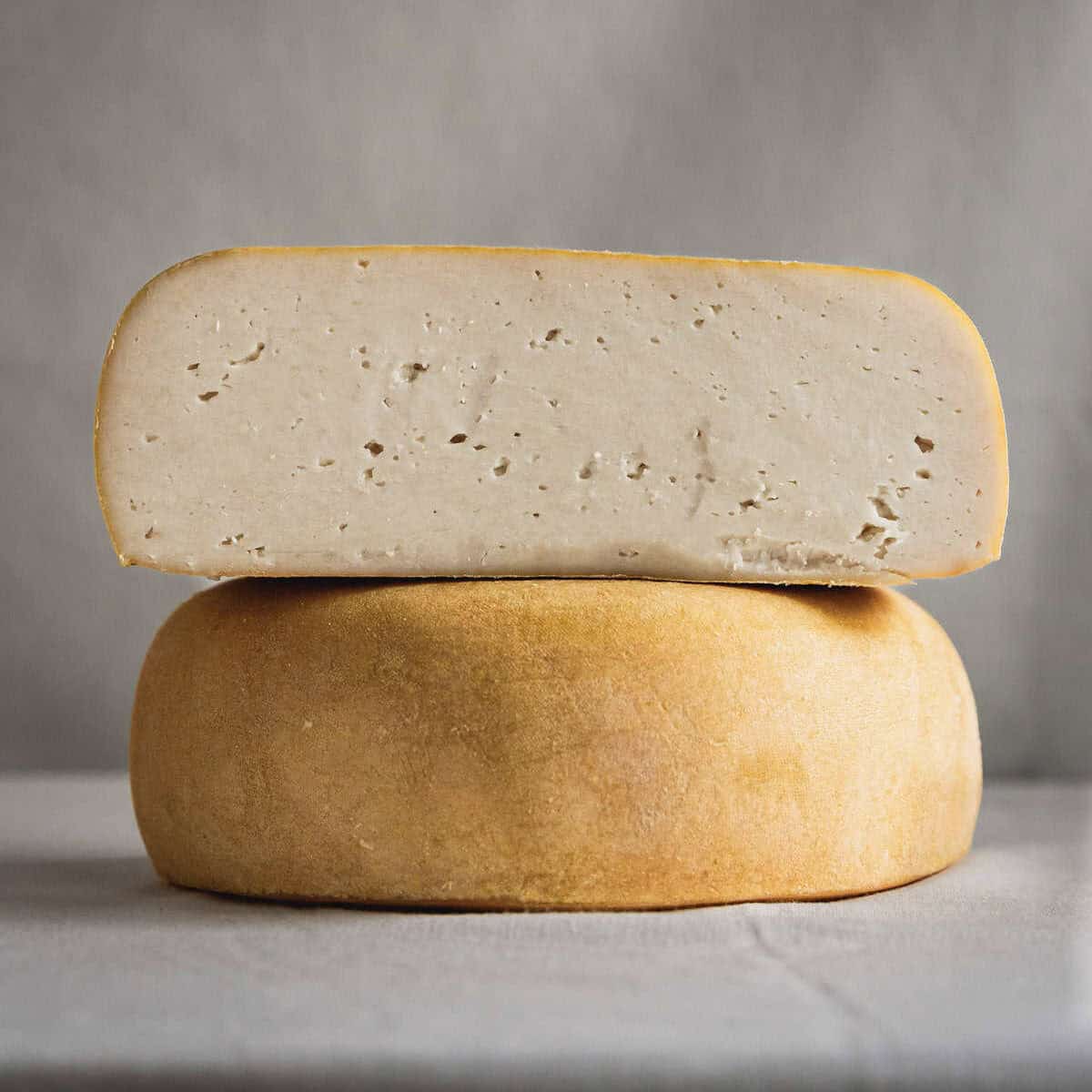It takes time, money, and a tightly held quota to push cheese over the US-Canada border

“You have to be a romantic to invest yourself, your money, and your time in cheese.”
Anthony Bourdain, celebrity chef and writer of unvarnished truths about American restaurant culture, penned that sentence about culinary hero Terrance Brennan. Bourdain credits Brennan as the first American chef to get serious about serving a continental cheese course. Between 1993 and 2016 at his two New York City eateries, Picholine and Artisanal Fromagerie Bistro & Wine Bar, Brennan pushed a mahogany cheese cart chockablock with imported and domestic artisanal cheeses onto a clientele who didn’t yet know they wanted it. Brennan, says Bourdain, was the only chef who loved cheese enough to lose money on it.
Due to import and export quota systems designed to give domestic cheese producers a competitive edge, which almost always require import and export middlemen, makers and mongers looking to do business across the US- Canadian border must share this level of romance about cheese to make the prospect work.
That’s not to say no cheese gets across this friendly border: Tourists can transport small amounts for personal use if they’re well-wrapped, properly labeled, and legally declared to customs officials. And in 2023, $131 million ($192 million CAD) worth of American-made cheese was exported into Canadian markets, according to international trade data analysts at Trading Economics. That same year, Statistics Canada, a government agency that tracks all types of national data, says about $44 million ($63 million CAD) of Canadian cheese made its way into the American market.
“A cross-border artisan cheese trade exists because of consumer demand. Imported cheeses allow consumers to travel the world without leaving their homes, so even if there are similar varieties of cheese [from another country], each provides consumers with a unique experience,” says Andrea Berti, a senior director of business development at Atalanta Corporation, a specialty foods company based in Elizabeth, New Jersey. Atalanta exports Italian-style cheeses to Canada and imports Canadian goat cheese into the United States.

Curds and Quotas
Compared to each country’s cheese market in 2023, though, these imports add up to only the tiniest slices. American-made cheese comprised 3.8 percent of the 2023 Canadian market, while Canadian-made cheese accounted for 0.2 percent of the American market.
For the small percentage of makers pushing and pulling cheese over the line, the journey is not easily navigated, says Zoe Brickley, director of communications and e-commerce at Jasper Hill Farm in Greensboro, Vermont, just 35 miles south of the border.
“Montreal is a beautiful international food city with great cheese shops. It’s also our closest major metropolitan area and an obvious target market for us,” says Brickley. But in her 16-year tenure at Jasper Hill, the company has made several attempts to get a steady supply of its award-winning cheeses, such as Moses Sleeper, Whitney, Willoughby, and Winnimere, into the Canadian market.
Canadian and American cheese imports operate on tariff rate quota (TRQ) systems that are driven by milk supply management schemes on both sides of the border. There have been some system modifications over time as North American trade agreements have been renegotiated, but these basic import protections have been in place for decades to help prop up the dairy farmers. The Canadian government prohibits the rBST hormone in milk production and does not subsidize dairy farmers as a matter of policy, while the American government allows hormones in milk production and subsidizes its dairy farmers.
On the Canadian side of the TRQ coin, cheese import and export brokers, distributors, and some cheese shops hold permits and quota allocations that allow them to bring cheese into Canada with
a duty rate between 8 and 20 percent, depending on the type of cheese being imported, explains Gloria Terhaar, a regulatory analyst with customs broker and freight management company PCB Global Trade Management. These quotas are awarded to agents who’ve held them since the system was established. The Canadian government reviews them annually to make sure the quota is either used up or reallocated.
If the amount of cheese in any shipment across the border exceeds the import agent’s quota, the duty rate applied to that shipment shoots up by as much as 250 percent, which is meant to be cost-prohibitive. This two-tier throttle was designed to ensure that the price of Canadian cheese made with more costly milk would be competitively priced against imported cheese. At the time of publishing this issue, the farm gate price for milk in Canada is $2.62 ($3.75 CAD) per gallon, while American farmers are getting about $1.99 ($2.85 CAD) per gallon.
One criticism of the Canadian system, explains Joe Dal Ferro, chairman of the International Cheese Council of Canada, is that the quota is allocated according to sales of domestic and imported cheeses, which has led to a disproportionate amount of quota being awarded to Canadian dairy processors who have no incentive to import value- added cheeses produced by American dairy exporters.
According to Dal Ferro, Canada’s quota policy means that distributors often receive a quota too small
to support the fixed costs (i.e. transportation, storage, exchange rates) of importing and distributing the cheese. As a result, importers are forced to rely on the practice of renting quota from another importer for a fee, which must be passed onto the consumer or eaten by the agent.

Barriers and Breakthroughs
Jasper Hill’s first attempt to export cheese into Canada hit this type of roadblock. Circa 2012, the Vermont Agency of Agriculture invited the cheesemakers to show their cheese in the agency’s Vermont-made booth at SIAL Canada, an agri-business trade event in Montreal. There, the owners of an established Montreal-based cheese importer, Les Dépendances du Manoir, tasted Winnimere, a raw cow’s milk washed-rind cheese that conjures Jura Mountain classics like Vacherin Mont d’Or or Försterkäse; according to Brickley, they fell in love with it.
The importer had some available quota, worked out the logistics, and sent a truck down to Vermont to get a supply to distribute throughout Quebec. But when the import business was sold in 2015, the new owners elected to use their limited quota for importing more profitable or logistically efficient products, and the arrangement fell through.
Jasper Hill stayed out of the Canadian market for about eight years until they went back to SIAL Canada to give it another go. “We spent two years in earnest trying to find the right partner,” Brickley says. “We got pretty close to an initial order with one of them, but by the time we worked through the details, their quota position had changed and the deal fell through.” It wasn’t until late 2024 that Jasper Hill struck up a partnership with Canadian distributor Tree of Life to get its wheels and wedges into 117 specialty cheese markets and Whole Foods grocery stores from Nova Scotia to British Columbia.
This entire process must be customer- driven so that distributors with quota in Canada clearly see the value of your line and want to import it. “There is almost nothing we can do to change the hurdles of international trade,” says Brickley, due in part to the fact that most American artisan cheesemakers price their products to absorb the true cost of cheese production, whereas larger commodity operations can externalize costs across a wider landscape to bring down prices for the consumer.
But for American artisan cheesemakers, once the Canadian quota is secured, Terhaar says one way to keep it flowing is to maintain a steady supply. “You don’t want to get customers loving your cheese only to have it drop out of circulation because you can’t meet the demand,” she says. Lack of supply could also be a reason a Canadian importer drops an American cheese from their list—if they don’t use all of their quota in a given year, they stand to lose it in the following year’s allocation.
Political Impacts of Imports
There is little political will in Canada to change restrictions on cheese imports, says Terhaar. International court cases alleging these restrictions to be illegal have been decided in Canada’s favor. Recent legislation that would alter the supply management system has made some headway in parliament, but with Prime Minister Justin Trudeau’s decision to step down, all parliamentary procedures will be reset; the bill will have to be reintroduced, and its proponents will have
to renavigate protectionist proclivities from square one, she says. The only other thing that could bring American cheesemakers more access to Canadian markets would be US trade representatives renegotiating the terms of the Canada-United States-Mexico free trade agreement, which is up for review in 2026.
While importing cheese into the US also entails quotas, Mark Bomalaski, of White River Junction, Vermont- based importer Provisions International, sees the heavy logistical load as the bigger barrier. He says there are logistical issues from collecting cheese all over Quebec, which is twice the size of Texas, to staging the cheese on the Canadian side of the border and ensuring it’s properly labeled to assembling all the relevant food safety and sourcing information to get the products through customs. And then there is the fluctuating currency exchange rate. If you get any part of the process wrong, Bomalaski says, “your margin can evaporate overnight.”
“Last, but certainly not least, is the threat of trade wars waged by the [Trump] administration; this
has generated huge uncertainties for us and all of our partnered producers,” says Bomalaski. And that uncertainty could cause problems, regardless of which side of the border you’re trying to move cheese.




